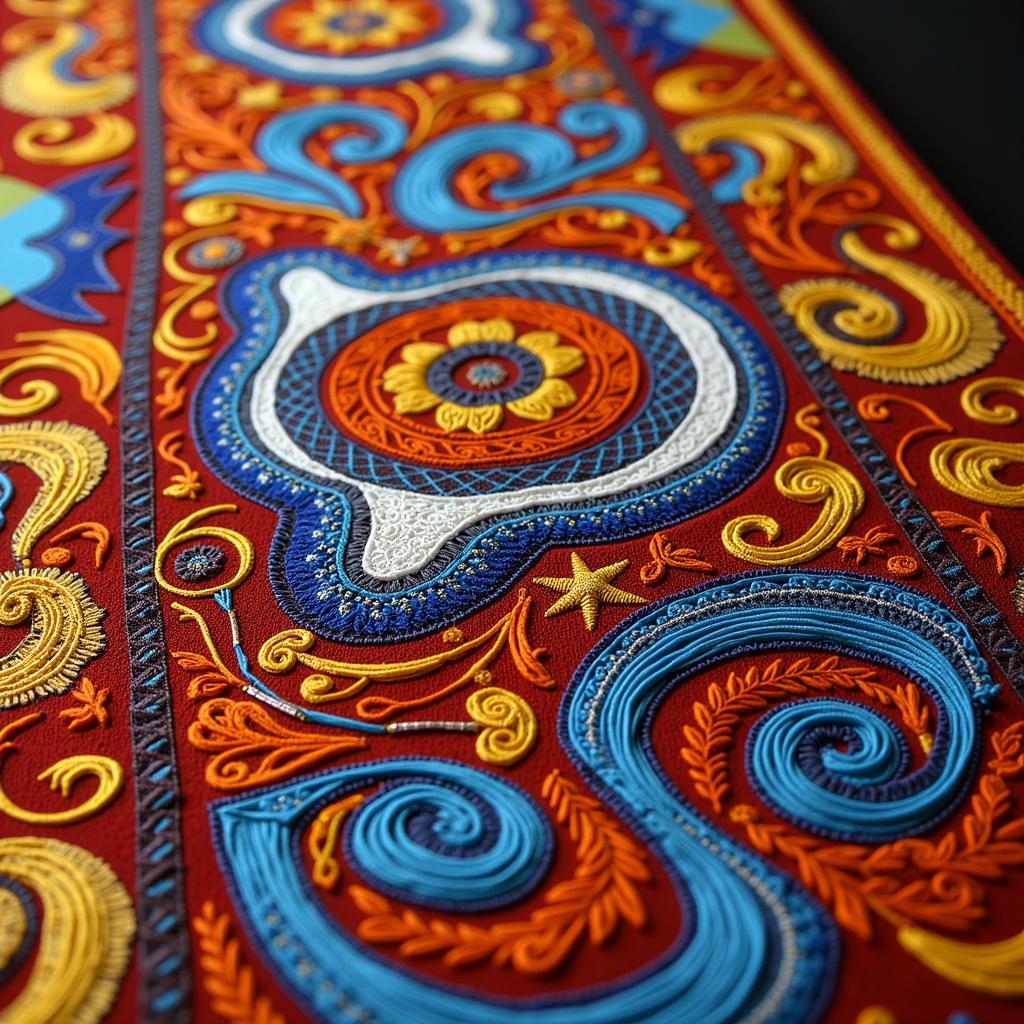African Clergy Stoles: A Symbol of Faith and Tradition
African Clergy Stoles are more than just pieces of fabric; they are powerful symbols of faith, tradition, and cultural identity. They represent the wearer’s religious authority, their connection to a specific denomination, and often, their unique African heritage. This article delves into the rich history, diverse designs, and profound significance of African clergy stoles.
Exploring the Significance of African Clergy Stoles
Clergy stoles in Africa, much like their counterparts in other parts of the world, are worn by ordained ministers, priests, and other religious leaders during liturgical services. However, what distinguishes African clergy stoles is the vibrant incorporation of indigenous designs, patterns, and symbolism. These elements reflect the rich tapestry of African cultures and spiritual traditions, adding a unique dimension to the stole’s meaning. The stoles often feature intricate embroidery, bold colors, and symbolic motifs that speak to the specific beliefs and practices of the community they represent.
The Cultural Context of African Clergy Stoles
The significance of African clergy stoles goes beyond their religious function. They are often seen as a bridge between the spiritual and the cultural, connecting the wearer to their ancestral heritage. The designs woven into the fabric can represent specific clans, tribes, or ethnic groups, further strengthening the sense of community and shared identity. For example, a stole might incorporate Adinkra symbols from Ghana, representing proverbs and concepts related to faith, morality, and life. Similarly, the use of Kente cloth patterns in stoles can denote royalty, status, and spiritual authority.
A Closer Look at the Design and Symbolism
African clergy stoles exhibit a remarkable range of designs and symbolism, reflecting the continent’s diverse cultural landscape. While the basic stole form remains consistent, the details vary greatly from region to region and even within specific denominations. Some common motifs include depictions of animals, plants, and celestial bodies, each holding specific cultural and spiritual meaning. The use of color is also significant, with different hues representing various aspects of faith and tradition. For instance, gold might symbolize royalty and divine power, while green could represent growth and renewal.
 African Clergy Stoles: Exploring Symbolic Motifs and Color Significance
African Clergy Stoles: Exploring Symbolic Motifs and Color Significance
Materials and Craftsmanship: A Legacy of Skill
Traditional African clergy stoles are often crafted from locally sourced materials, such as handwoven cotton, silk, or even bark cloth. The creation of these stoles is a testament to the skill and artistry of African artisans, who employ techniques passed down through generations. The meticulous embroidery, intricate weaving, and careful attention to detail ensure that each stole is not just a garment, but a work of art.
What are some common questions about African clergy stoles?
How are African clergy stoles different from Western stoles? While sharing a similar basic form, African clergy stoles often incorporate vibrant colors, indigenous designs, and cultural symbolism not typically found in Western counterparts.
What materials are used to make African clergy stoles? Materials range from handwoven cotton and silk to locally sourced materials like bark cloth.
What do the symbols on African clergy stoles represent? Symbols vary by region and culture, but often represent proverbs, concepts related to faith, morality, animals, plants, and celestial bodies.
In conclusion, African clergy stoles are more than just vestments; they are powerful symbols of faith, tradition, and cultural identity. They reflect the rich tapestry of African spiritual traditions and artistic expression. These stoles connect the wearer to their community, their heritage, and their divine calling.
For any support, feel free to contact us. Phone Number: +255768904061, Email: kaka.mag@gmail.com Or visit our address: Mbarali DC Mawindi, Kangaga, Tanzania. We have a 24/7 customer service team.
FAQ:
- Where can I purchase authentic African clergy stoles?
- What is the typical price range for African clergy stoles?
- How do I care for and clean an African clergy stole?
- Are there specific occasions when different stoles are worn?
- Can custom designs be incorporated into African clergy stoles?
- Are there any ethical considerations when purchasing African clergy stoles?
- What is the history behind the use of stoles in African religious ceremonies?
Other related articles you might be interested in:
- The Symbolism of African Textiles
- Religious Practices in Sub-Saharan Africa
- The Role of Art in African Spirituality
Need more information? Reach out to us!

